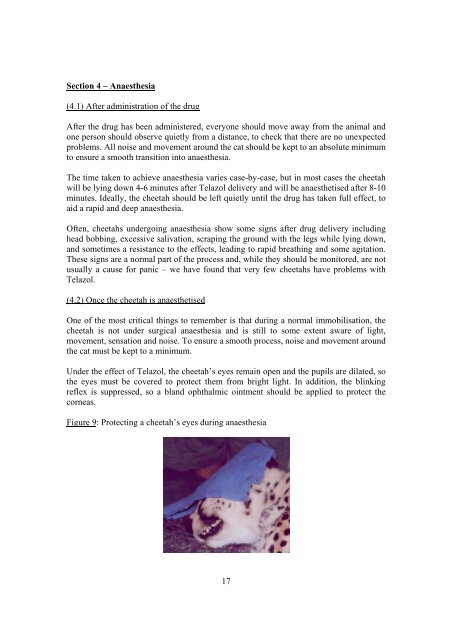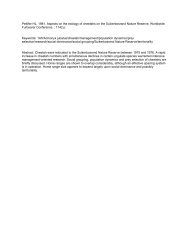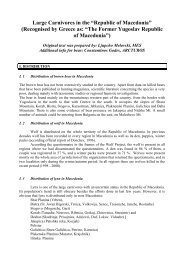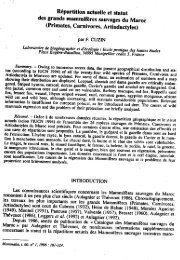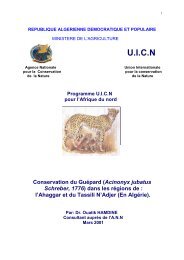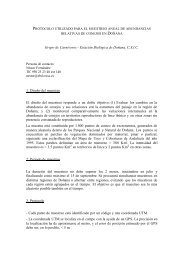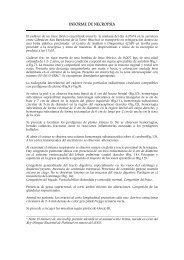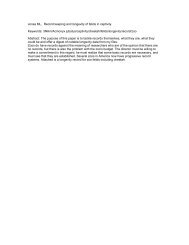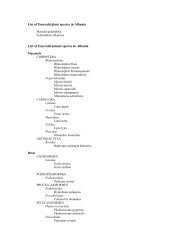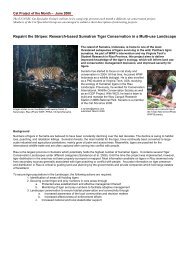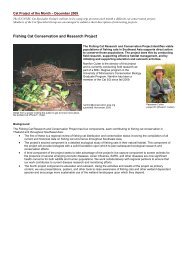cheetah capture and immobilisation handbook - Cat Specialist Group
cheetah capture and immobilisation handbook - Cat Specialist Group
cheetah capture and immobilisation handbook - Cat Specialist Group
You also want an ePaper? Increase the reach of your titles
YUMPU automatically turns print PDFs into web optimized ePapers that Google loves.
Section 4 – Anaesthesia<br />
(4.1) After administration of the drug<br />
After the drug has been administered, everyone should move away from the animal <strong>and</strong><br />
one person should observe quietly from a distance, to check that there are no unexpected<br />
problems. All noise <strong>and</strong> movement around the cat should be kept to an absolute minimum<br />
to ensure a smooth transition into anaesthesia.<br />
The time taken to achieve anaesthesia varies case-by-case, but in most cases the <strong>cheetah</strong><br />
will be lying down 4-6 minutes after Telazol delivery <strong>and</strong> will be anaesthetised after 8-10<br />
minutes. Ideally, the <strong>cheetah</strong> should be left quietly until the drug has taken full effect, to<br />
aid a rapid <strong>and</strong> deep anaesthesia.<br />
Often, <strong>cheetah</strong>s undergoing anaesthesia show some signs after drug delivery including<br />
head bobbing, excessive salivation, scraping the ground with the legs while lying down,<br />
<strong>and</strong> sometimes a resistance to the effects, leading to rapid breathing <strong>and</strong> some agitation.<br />
These signs are a normal part of the process <strong>and</strong>, while they should be monitored, are not<br />
usually a cause for panic – we have found that very few <strong>cheetah</strong>s have problems with<br />
Telazol.<br />
(4.2) Once the <strong>cheetah</strong> is anaesthetised<br />
One of the most critical things to remember is that during a normal <strong>immobilisation</strong>, the<br />
<strong>cheetah</strong> is not under surgical anaesthesia <strong>and</strong> is still to some extent aware of light,<br />
movement, sensation <strong>and</strong> noise. To ensure a smooth process, noise <strong>and</strong> movement around<br />
the cat must be kept to a minimum.<br />
Under the effect of Telazol, the <strong>cheetah</strong>’s eyes remain open <strong>and</strong> the pupils are dilated, so<br />
the eyes must be covered to protect them from bright light. In addition, the blinking<br />
reflex is suppressed, so a bl<strong>and</strong> ophthalmic ointment should be applied to protect the<br />
corneas.<br />
Figure 9: Protecting a <strong>cheetah</strong>’s eyes during anaesthesia<br />
17


